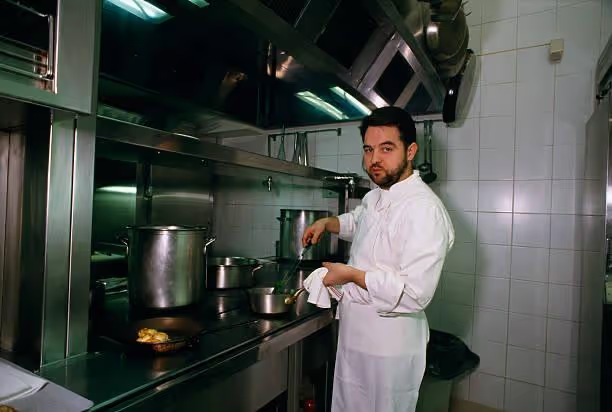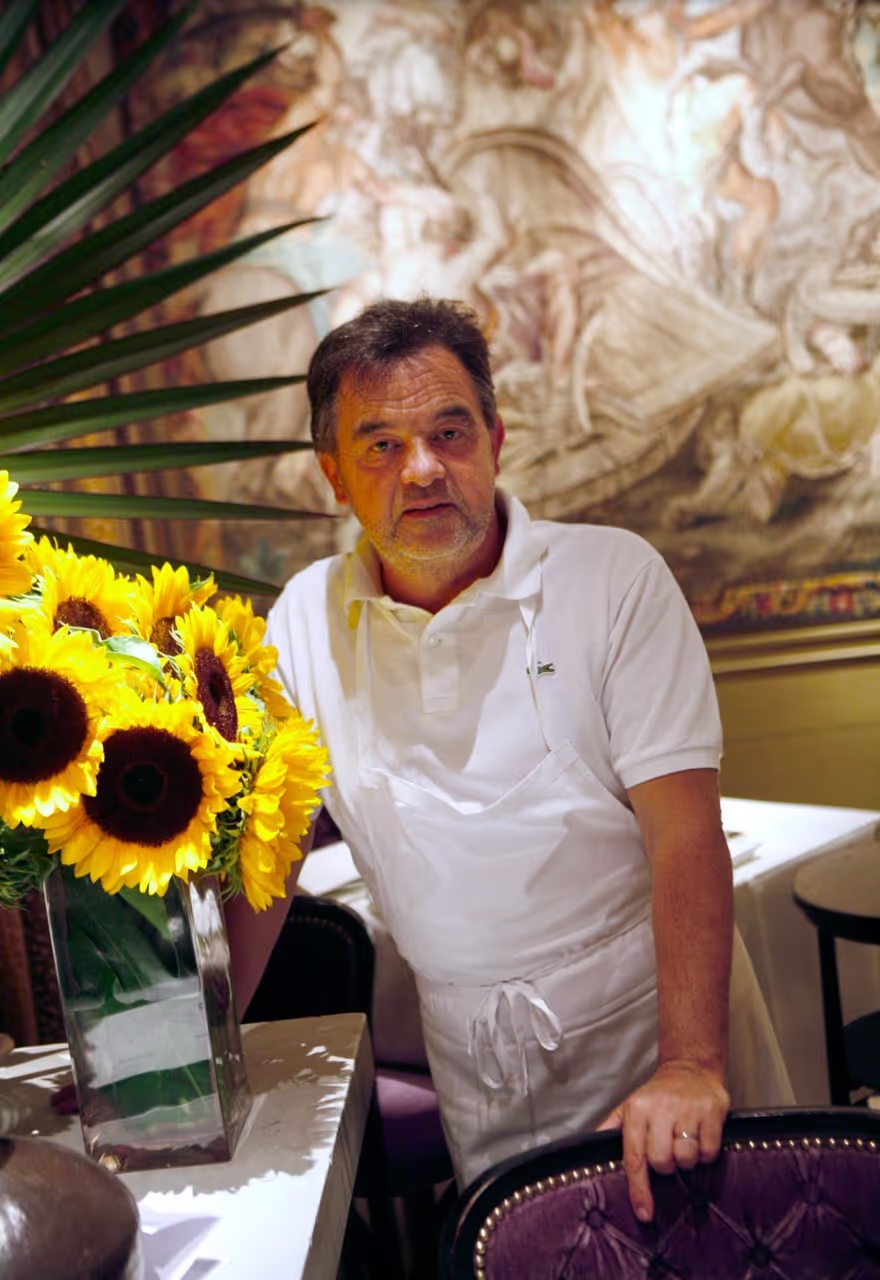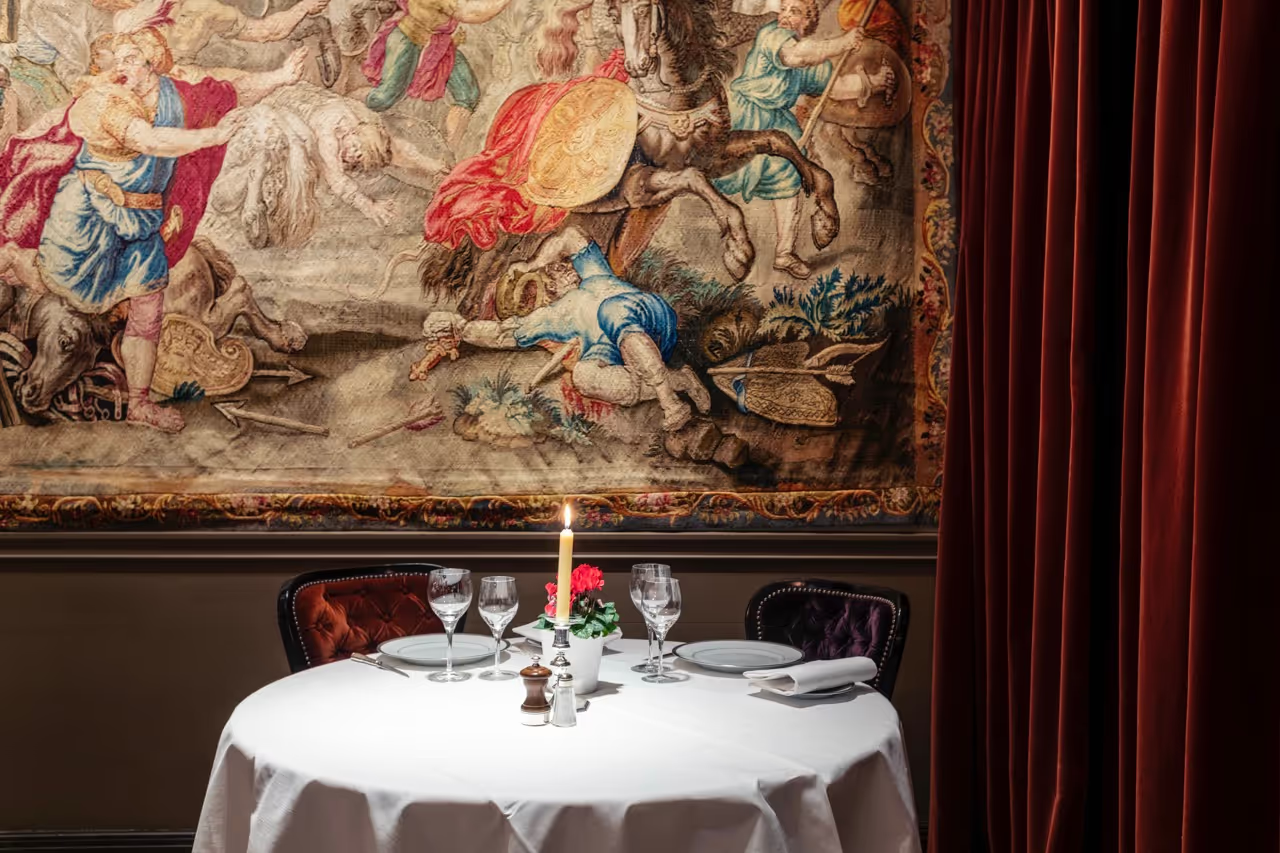
Bernard Pacaud, the discreet master behind L’Ambroisie, has spent over six decades shaping French haute cuisine. Trained under the legendary “Mère” Brazier, he built his philosophy on uncompromising respect for the finest ingredients. At Place des Vosges, his restaurant remains a timeless sanctuary where authenticity triumphs over spectacle.

Bernard Pacaud began his apprenticeship at the tender age of 13 and a half under "Mère" Brazier, an icon of Lyonnaise cuisine. He quickly established his culinary philosophy, which is centered on using only the best ingredients. "Use only the best. In the end, customers are willing to pay the price," he states. Pacaud isn't the type to be on magazine covers or television. "I'm just doing my job the best I can," he says.

The name L'Ambroisie is discreetly carved in a subtle green at the entrance, under the arcades of Place des Vosges. Inside, guests are transported to a world reminiscent of old France: wall tapestries, a chateau-like decor, and traditional service. The restaurant offers a selection of fine wines not listed on the menu.
"Look what gastronomy has become!" Bernard Pacaud exclaims, his disappointment visible above his stubble. "Gastronomy has become like perfumery, and some cognac. Attractive packaging and creative presentations. But what's really inside? Chemistry replaces the essence of flowers, and caramel replaces barrel aging. Only appearances matter. We only eat with our eyes."
For a moment, Pacaud seems lost in the heart of his restaurant. Behind him is the prestigious Place des Vosges, considered by many to be the most beautiful square in Paris. To his left and right, his team meticulously checks every detail, their trained eyes scanning the chateau-like decor for the slightest imperfection. Is everything perfectly in place? Are the tapestries impeccable? Is the lighting in the first room correctly adjusted? Just a moment ago, Pacaud was straightening a candle himself.
He then drifts into memories, recalling dishes made with mousse and jelly, so popular today. "I prefer emotion over emulsion," he mutters, adjusting his blue apron. He remembers his youth and the Lyonnaise cuisine of a bygone era when thrushes and woodcocks were still cooked and red-clawed crayfish were transformed into delicious preparations. "We had so many crayfish that we sold their shells to other establishments so they could make crayfish butter." Today, true red-clawed crayfish are almost impossible to find. "In Lyon at that time, we used exclusively 'manicured' Bresse poultry."
"Manicured" poultry? "The poultry had to be clean, and so did the farmers. My mentor, Mère Brazier, demanded it." Bernard Pacaud experienced these moments firsthand. He has 60 years of experience in haute cuisine. At 13 and a half, this Breton orphan was taken in by Eugénie Brazier (1895-1976), the greatest chef in Lyon and a true legend. It is said that in 1953, the Waldorf Astoria in New York offered her an annual salary of $150,000. She refused. An Indian maharaja even tried to lure her with a kitchen equipped with pure gold pots. She refused again. She only capitulated once, when a representative from the electricity company showed up at her door, insisting her restaurant needed to be connected to the grid. The days of wood and coal stoves were numbered. But Eugénie Brazier declared, "If I have to have electricity, I'll produce it myself." She then had a generator installed in the cellar.
The young Bernard grew up in this atmosphere. Eugénie Brazier influenced Pacaud's view of the world and of cooking. When he began his apprenticeship in 1962, he was sometimes tasked with watching the pigs. Mère Brazier kept a few animals, convinced that homemade food simply tasted better. "Back then, we bought based on the origin of the products. Bresse capons, Marmont tomatoes..." Even today, every Tuesday, Pacaud selects his own produce and doesn't hesitate to give his suppliers a piece of his mind. He carefully examines each porcini mushroom, flatly refusing any he deems to be of inferior quality. The suppliers don't complain, because Pacaud pays them well. "When you really know ingredients, you approach them differently. If the langoustines aren't truly fresh, I can feel it immediately. I feel the ammonia stinging my fingers."

Some clients, suppliers, and friends occasionally tell him that this quest for the best products is a bit old-fashioned. They say it lacks creativity. Pacaud retorts, "After Mère Brazier, I worked with Claude Peyrot at 'Vivarois' in Paris. He was one of the most innovative chefs of the time. The first curried oysters? That was him. But the product was always at the center of the plate. We didn't need to mask flavors or paint with the food." Eugénie Brazier and Claude Peyrot's innovative ideas were his initial inspirations.
When he opened his own small restaurant on rue de Bièvre in the early 1980s, Pacaud wanted to rethink everything. "I wanted a place for friends. With daily specials on a chalkboard, two people in the kitchen, two in the dining room. Mondays were for pot-au-feu, Tuesdays for veal stew." In just two years, this modest restaurant received numerous culinary distinctions. He then moved to the prestigious "Hôtel de Luynes," on Place des Vosges. The menu expanded, but the philosophy remained: "Only the best for the clients."
Is L'Ambroisie an anachronism? Bernard Pacaud sets himself apart from other great French chefs. He doesn't open side-project bistros, doesn't advertise industrial products, and rarely appears on magazine covers—only when he knows the journalist or the magazine well. His team is loyal to him. He doesn't make a fuss, settling for a simple marble sign with the inscription "L'Ambroisie." He even omitted the word "restaurant." "I don't need to see my name everywhere," he says.

His fricassée of lobster with chestnuts and pumpkin in a "diabolical" sauce is one of his signature dishes. The "diabolical" part comes from a passionate flaming with cognac. It also has the briny taste of the crustacean—a clever recipe without being overly complicated. When he's in the mood, Pacaud prepares a "tourte" for his guests—a large, warm pie under a crispy puff pastry. Sometimes it's filled with scallops, other times with game birds. The first cut reveals the tourte's charm. The chef meticulously layers duck breast and foie gras, occasionally adding a bit of veal. It's an exquisite dish that is no longer found elsewhere. "The tourte requires a lot of work. You have to prepare it before the evening service and, if possible, serve it to the first customers," he says with a raised eyebrow.
For dessert, Bernard Pacaud has a preference for a simple chocolate cake, divinely rich, accompanied by a creamy vanilla ice cream. Is there a secret to this recipe? A special technique? Pacaud is surprised by the question: "You just have to use good chocolate," he confides. The seemingly simple "arlettes" on their menu are sublimated by the wine: a Vouvray moelleux, "La coulée d'or," from 1990 by Bourillon Dorleans. "An exceptional vintage for this wine."
Among the menu's must-haves, the sweetbreads are offered in various ways: for example, with financière quenelles and macaroni. The quenelles, surprisingly light, have lost the starchy density of yesteryear. The sweetbreads he offers with capers would win over even those who aren't fans of offal. The lemons add a touch of freshness and the capers a hint of spice. It's a balanced and seemingly simple dish. "I don't seek to innovate excessively; I prioritize the essentials," Pacaud always says. "If I can minimize the transformation of ingredients, then I'm happy." That's why he secretly admires Italian cuisine. "Frank flavors, seemingly simple preparations, but they reveal magnificent dishes! But those who only frequent Parisian restaurants can't understand."
According to him, the appreciation for good products is being lost. It's his greatest concern: "People are losing the taste for real products," he sighs. "They find farm-raised beef and chicken to be too tough. They rave about overly sweet appetizers." Where can one still "learn"—or rather "rediscover"—the true flavor of products today? Pacaud shrugs and glances at the immaculate table. The answer seems obvious: at L'Ambroisie, in Paris, on the Place des Vosges.